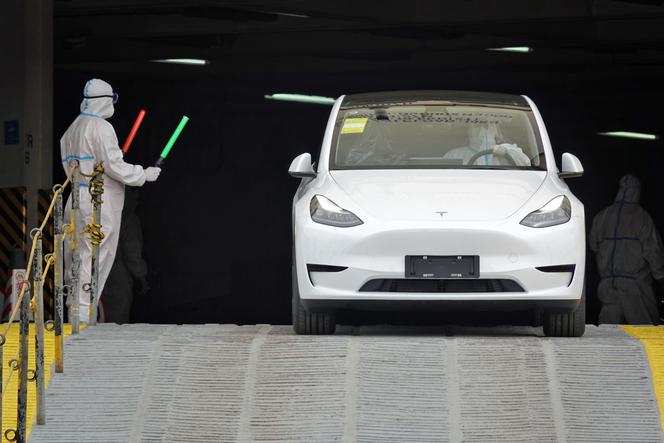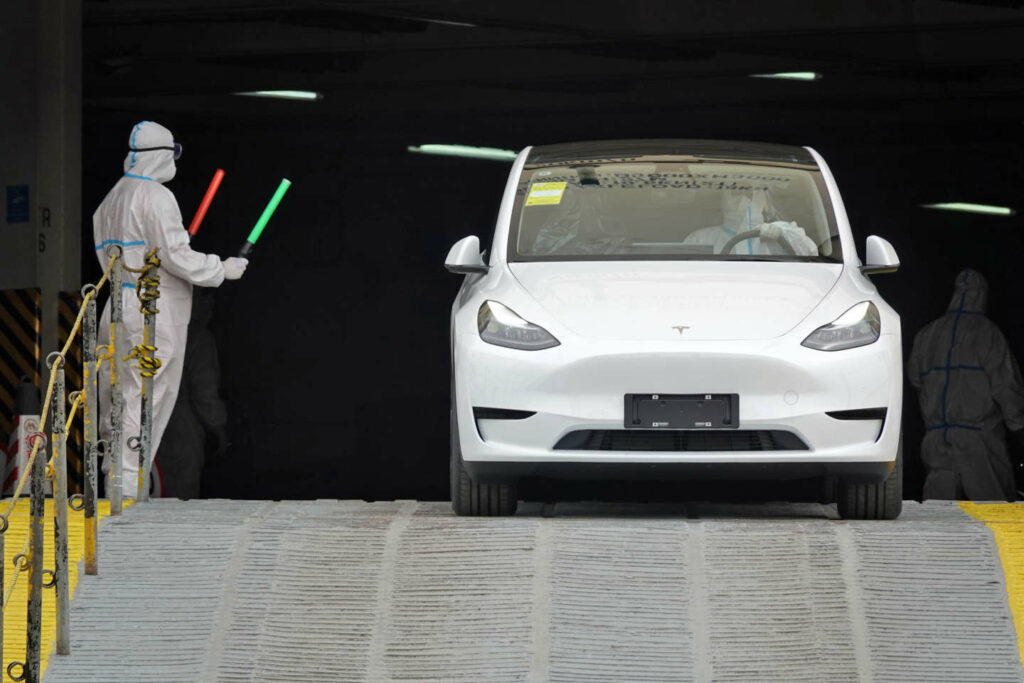
It is a key sector for the health of Chinese industry, and it is doing badly. With just over a million cars sold in April, sales fell 35.7 percent year-on-year, and 34 percent from the previous month, the China Passenger Car Association said on Tuesday (January 10). may. In question, the multiplication of restrictions and confinements since the arrival of the Omicron variant in China, the last country in the world to maintain a zero Covid strategy.
Shanghai, the economic capital of the country, begins its seventh week of a draconian confinement which prevents consumers from buying cars and disrupts automobile production. The metropolis is one of the major production centers for the sector – Tesla, General Motors and Volkswagen factories are located there – but also for the components that supply the entire industry.
The authorities are doing everything to support the resumption of production: among the 666 strategic companies authorized to resume work on April 19, a third belonged to the automotive industry. However, this is not enough to solve the many bottlenecks, while most of the 25 million inhabitants of the economic capital are still confined to their homes.
Logistics remains a major challenge
The Tesla gigafactory represents one of the priorities of the municipality, both for its economic and symbolic weight. About 8,000 employees, half of the usual workforce, are sleeping on site, which allowed the plant to operate at 40% of its capacity at the end of April. However, the site had to significantly slow down the production rates, due to a lack of electronic components, one of its suppliers having had to stop production after the appearance of an outbreak of Covid-19 on its premises. As a result, the company was only able to produce 10,757 vehicles in April, of which only 1,512 could be shipped, and none exported. By March, the plant had shipped 65,814 vehicles, with more than half exported to Asia and Europe, according to Bloomberg.
The year 2022 was announced under good auspices for the world’s leading automotive market. Declining since 2017, sales had returned to growth in 2021 (+ 3.8%, with 26.28 million units sold). The association of automobile producers hoped to see this trend confirmed this year (+5.4% expected). A goal that now seems compromised. “Between March and May, 650,000 to 700,000 fewer vehicles will be produced because of the lockdowns, says John Zeng, China director of the consulting firm LMC Automotive, based in Shanghai.. At the beginning of the year, we had already predicted that the Russian-Ukrainian war and the lack of semiconductors could cost China 1 million vehicles. There, that would be 1.6 million to 1.7 million fewer vehicles. Result, the growth of the automotive market will not be 5%, as we expected, but almost zero. » And again, continues the expert, « this assumes that Shanghai controls the epidemic before June, and that the government takes stimulus measures for the second half of the year: some cities, such as Shenzhen, have already announced subsidies for the purchase of cars ».
You have 53.41% of this article left to read. The following is for subscribers only.

